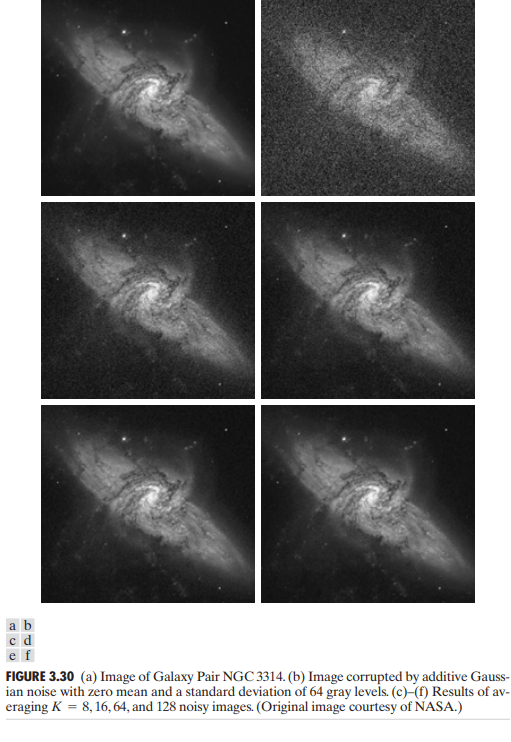Consider a noisy image g(x, y) formed by the addition of noise h(x, y) to an original image f(x, y); that is,
g(x, y) = f(x, y) + h(x, y)
where the assumption is that at every pair of coordinates (x, y) the noise is uncorrelated† and has zero average value. The objective of the following procedure is to reduce the noise content by adding a set of noisy images, { gi (x, y) }
An important application of image averaging is in the field of astronomy, where imaging with very low light levels is routine, causing sensor noise frequently to render single images virtually useless for analysis. Figure 3.30(a) shows an image of a galaxy pair called NGC 3314, taken by NASA’s Hubble Space Telescope with a wide field planetary camera. NGC 3314 lies about 140 million light-years from Earth, in the direction of the southern-hemisphere constellation Hydra. The bright stars forming a pinwheel shape near the center of the front galaxy have formed recently from interstellar gas and dust. Figure 3.30(b) shows the same image, but corrupted by uncorrelated Gaussian noise with zero mean and a standard deviation of 64 gray levels. This image is useless for all practical purposes. Figures 3.30(c) through (f) show the results of averaging 8, 16, 64, and 128 images, respectively. We see that the result obtained with K=128 is reasonably close to the original in visual appearance


1 thought on “Image Averaging in Image processing”